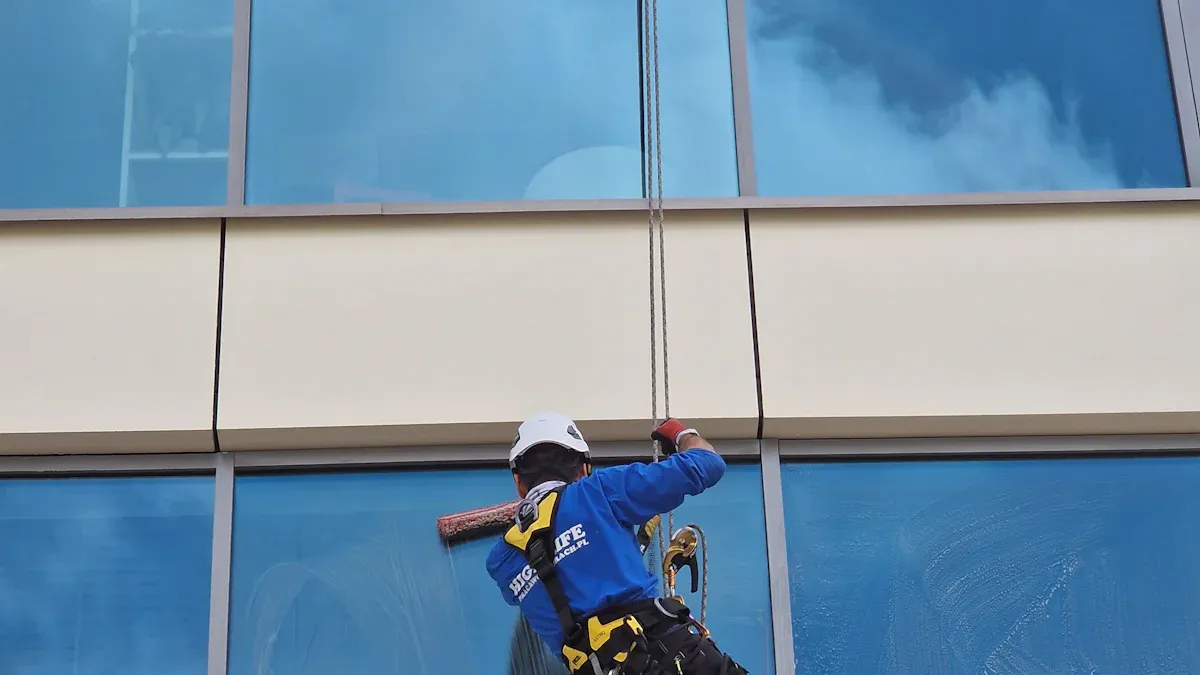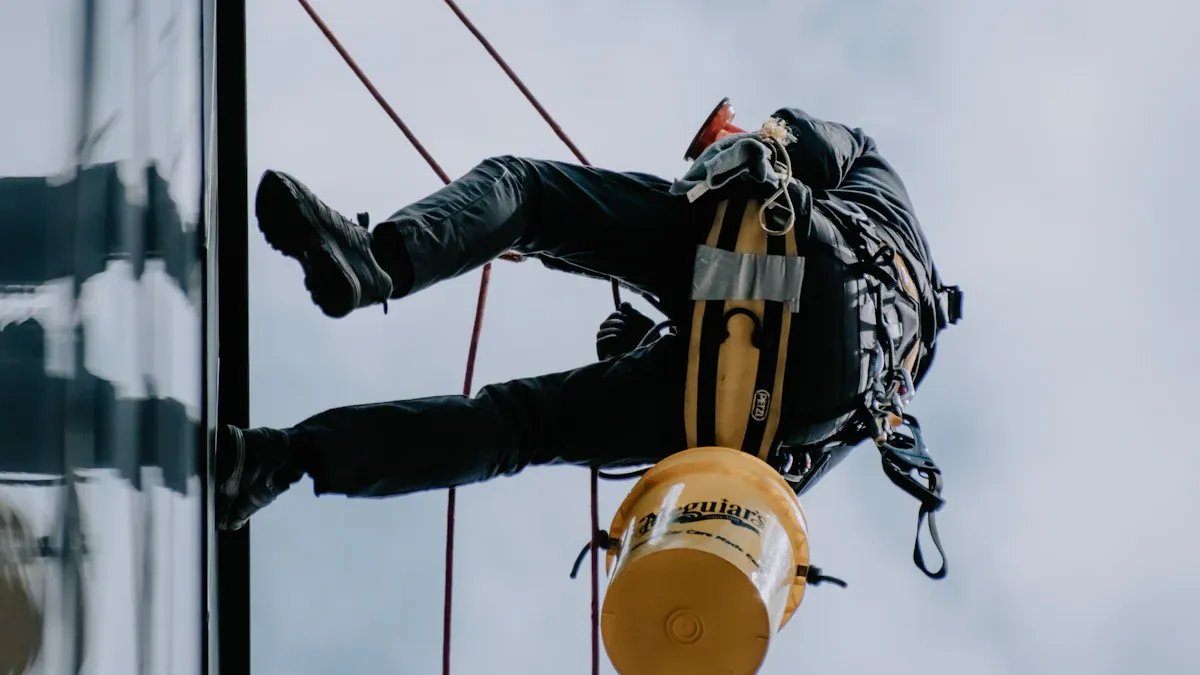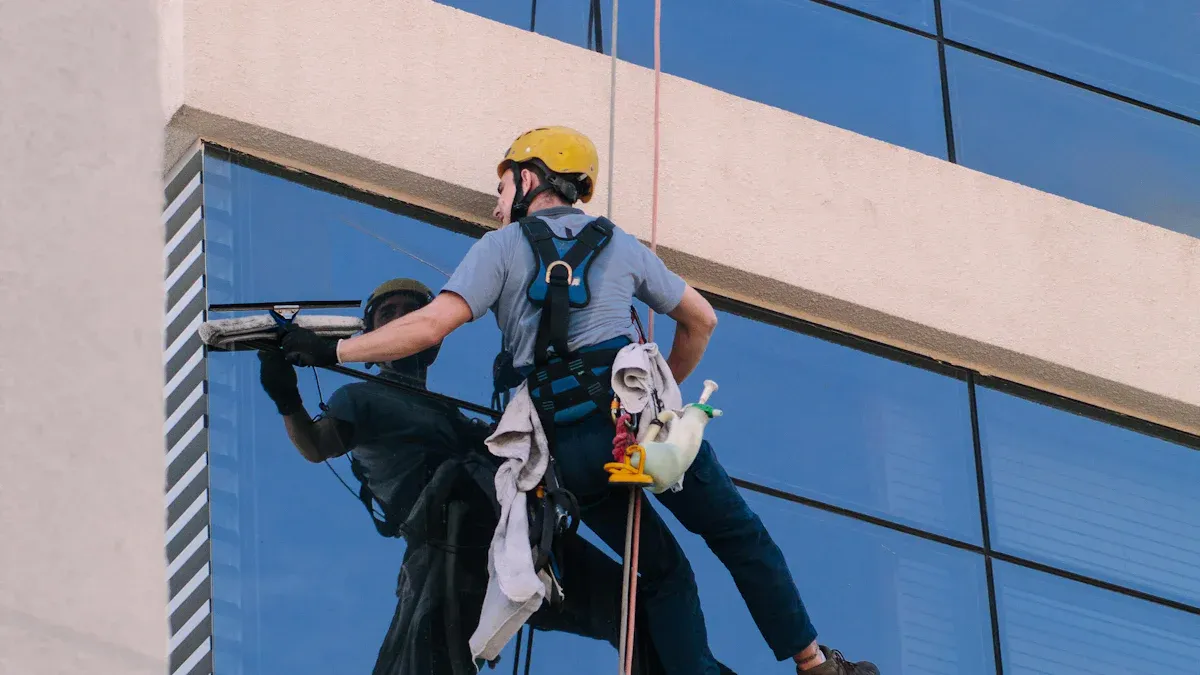How to take care of your helius headlamp during outdoor adventures

Taking care of your helius flashlight is crucial for your safety and performance during outdoor adventures. A well-maintained camping headlamp ensures durability and build quality, offering resistance to wear and tear. With high brightness output and long-lasting batteries for extended use, it’s your best camping headlamp for emergency situations and hands-free illumination. Plus, proper care enhances comfort and fit, making it the best overall headlamp for camping and outdoor life.
Key Takeaways
Turn off your headlamp before cleaning to stay safe and save battery.
Wipe the lens often with a soft cloth to keep it bright and useful.
Keep your headlamp in a dry, cool spot to avoid heat and water damage.
Preparing Your Helius Flashlight for Maintenance
Power off the headlamp
Before you start any maintenance, always turn off your headlamp. This simple step prevents accidental activation and ensures your safety while handling the device. It also helps conserve battery life, especially if you're using long-lasting batteries. A powered-off headlamp is easier to clean and inspect without worrying about draining power or damaging internal components.
Remove the batteries safely
Once the headlamp is off, carefully remove the batteries. If you're using a camping headlamp with disposable batteries, take them out to avoid potential leaks that could damage the battery compartment. For rechargeable batteries, follow the manufacturer's guidelines for safe removal. This step not only protects the headlamp but also extends its battery life. Always handle batteries with care to prevent corrosion or mishaps.
Gather cleaning tools and materials
To keep your helius flashlight in top condition, gather the right tools for cleaning. Here's what you'll need:
A soft, dry cloth for wiping dirt and debris off the headlamp.
A small brush to clean hard-to-reach areas.
A microfiber cloth for the lens to maintain its brightness.
A mild cleaning solution (if necessary) to avoid damaging the weatherproofing.
Tip: Avoid using harsh chemicals or abrasive materials. They can harm the headlamp's seals and gaskets, reducing its water resistance.
Inspect the headlamp for loose parts, like screws or straps, and tighten them if needed. Proper care ensures your camping headlamp remains the best overall headlamp for outdoor adventures. With these tools, you'll be ready to clean and maintain your headlamp effectively, ensuring comfort and fit during your next trip.
Cleaning the Exterior of Your Headlamp

Remove dirt and debris with a soft cloth or brush
Your headlamp is bound to pick up dirt and grime during your outdoor adventures. To keep it in top shape, start by gently wiping the exterior with a soft cloth. For stubborn debris stuck in crevices, use a small brush to loosen and remove it. If you’re wondering which tools work best, here’s a quick guide:
Cleaning Tool/Method | Description |
|---|---|
Baking Soda and Water | Mix baking soda with water to create a paste for cleaning. Effective for removing dirt and grime. |
Clay Bar | Used for polishing; can clean headlights and make surfaces smooth and shiny. |
Microfiber Cloths | Ideal for cleaning scratched headlights; prevents further damage and cleans effectively. |
Hydrogen Peroxide | Used with water to clean scratched headlights; improves visibility and clarity. |
Lemon and Salt | A natural cleaner; the sourness of lemon combined with abrasive salt helps remove grime. |
Stick to these tools, and you’ll have your camping headlamp looking as good as new.
Clean the headband and straps thoroughly
Don’t forget about the headband and straps! These parts often absorb sweat, dirt, and oils from your skin. Remove the straps if possible, and hand wash them with mild soap and warm water. Rinse thoroughly and let them air dry. This step not only keeps your headlamp clean but also ensures it stays comfortable and secure during your camping trips.
Avoid harsh chemicals to protect weatherproofing
Your headlamp’s weatherproof design is one of its best features, so you’ll want to preserve it. Avoid using harsh chemicals or abrasive cleaners, as they can damage the seals and gaskets that keep your headlamp water-resistant. Stick to mild cleaning solutions or natural options like baking soda or lemon. This way, you’ll maintain its weatherproofing and ensure it performs well in any condition.
Tip: Always double-check the manufacturer’s guidelines for cleaning to avoid voiding the warranty or damaging your headlamp.
By following these steps, you’ll keep your camping headlamp in excellent condition, ready to deliver the brightness and reliability you need on your next adventure.
Cleaning the Lens and Inspecting Components
Use a microfiber cloth for the lens
Keeping the lens of your headlamp clean is essential for maintaining its brightness. Dirt, smudges, or fingerprints can reduce the light output, making it less effective during your camping adventures. Use a microfiber cloth to gently wipe the lens. This type of cloth is soft and won’t scratch the surface. If the lens has stubborn grime, dampen the cloth slightly with water and wipe again. Avoid using paper towels or rough materials, as they can leave scratches. A clean lens ensures your camping headlamp delivers the brightness you need, whether you're hiking at night or setting up camp.
Inspect the battery compartment for corrosion
The battery compartment is a critical part of your headlamp. Corrosion can damage it and affect the weatherproofing. Start by removing the batteries and checking for any signs of leakage or rust. If you spot corrosion, follow these steps to clean it:
Gather vinegar, Q-Tips, gloves, paper towels, and water.
Use a Q-Tip dipped in vinegar to clean the affected areas.
Wipe the compartment with a damp cloth to remove any residue.
Let the compartment dry completely before reinserting the batteries.
Regular inspection and cleaning of the battery compartment help maintain the weatherproof design of your camping headlamp, ensuring it performs well in all conditions.
Check for damage to ensure water resistance
Inspecting your headlamp for damage is vital to preserve its weatherproofing and water resistance. Look for cracks in the lens cover, light bezel, or battery case. Check for broken wires or rust on metal parts. Verify that all components, including O-Rings, are intact. Damaged O-Rings can compromise the headlamp’s ability to withstand water exposure. Also, assess the retention straps for dirt or wear. By addressing these issues early, you can ensure your headlamp remains the best camping headlamp for outdoor adventures, ready to handle any weather conditions.
Tip: Regular inspections not only protect your headlamp’s weather resistance but also extend its lifespan, keeping it reliable for all your camping trips.
Drying and Reassembling Your Headlamp

Air dry all parts completely
After cleaning your camping headlamp, it’s crucial to let every part dry thoroughly. Moisture trapped inside can damage the components or reduce the headlamp’s weatherproof capabilities. Place the parts in a well-ventilated area and allow them to air dry naturally. Avoid rushing the process by using high heat, as this could harm the seals or gaskets.
For stubborn moisture, try using a hair dryer on a low heat setting to gently evaporate any water. You can also place silica gel packets near the parts to absorb excess moisture. These small steps help maintain the durability of your headlamp and ensure it’s ready for your next camping trip.
Tip: Always check that the seals and gaskets are intact before reassembling. Damaged seals can compromise the weatherproofing and lead to condensation issues.
Reassemble the headlamp securely
Once all the parts are completely dry, it’s time to put your headlamp back together. Start by carefully reinserting the battery, ensuring it’s positioned correctly. Then, reattach the straps and secure any screws or clips. Double-check that everything is snug and properly aligned. A loose component can affect the headlamp’s brightness or even its weatherproofing.
Take your time during this step. A securely assembled camping headlamp not only performs better but also lasts longer, giving you reliable hands-free lighting for all your outdoor adventures.
Test for proper weatherproofing and functionality
Before heading out, test your headlamp to ensure it’s functioning as expected. Turn it on and cycle through all the lighting modes to confirm the brightness levels are consistent. Check for any flickering or dimming, which could indicate an issue with the battery or internal components.
To verify the weatherproofing, inspect the seals and gaskets one last time. If you’ve recently cleaned the battery compartment, make sure it’s tightly closed. A properly sealed headlamp will resist water and moisture, keeping it reliable even in challenging conditions.
Note: Regular maintenance, including drying and testing, helps extend the battery life and ensures your camping headlamp remains dependable for years to come.
Testing and Storing Your Helius Flashlight
Test the headlamp's lighting modes
Before heading out on your next outdoor adventure, take a moment to test your camping headlamp. This ensures it’s ready to deliver the brightness you need in any situation. Start by cycling through the different lighting modes. Most helius headlamps come with adjustable beams, including:
Spotlight mode for long-distance visibility, perfect for spotting trails or distant objects.
Floodlight mode for even illumination during close-range tasks like setting up a tent.
Wide beam for activities like reading maps or cooking at the campsite.
Focused beam for pinpointing specific areas.
Red light mode to preserve your night vision.
Strobe mode for emergency situations, which emits a bright, flashing light to signal for help.
Testing these modes helps you familiarize yourself with the headlamp’s features and ensures it’s functioning properly. If you notice any flickering or dimming, check the battery and replace it if needed. A quick test can save you from unexpected issues during your outdoor trip.
Store in a cool, dry, and safe place
Proper storage and care are essential for keeping your camping headlamp in top condition. After cleaning and testing, store it in a cool, dry place away from direct sunlight. Excessive heat or humidity can damage the seals and reduce the headlamp’s weatherproofing. A dedicated storage pouch or box can protect it from dust and accidental impacts. Keeping your headlamp safe ensures it’s always ready for your next outdoor adventure.
Avoid extreme temperatures and moisture
Extreme temperatures can shorten the battery life and damage the internal components of your camping headlamp. Avoid leaving it in hot cars or freezing environments for extended periods. Moisture is another enemy. Even though your headlamp is weatherproof, prolonged exposure to damp conditions can lead to corrosion. By storing it in a controlled environment, you’ll maximize its battery life and ensure it performs reliably in emergency situations.
Tip: Regularly test and take care of your headlamp to maintain its brightness and functionality. This small effort goes a long way in maximizing battery life and ensuring your safety during outdoor adventures.
Taking care of your helius flashlight ensures it stays reliable for all your outdoor adventures. Regular maintenance keeps your camping headlamp clean, bright, and ready for action. Remember these key steps:
Wipe the headlamp to remove dirt and debris.
Inspect seals and gaskets to maintain waterproofing.
Store it in a cool, dry place to prevent damage.
Clean the lens with a soft cloth for maximum brightness.
Check for loose parts and tighten them before each trip.
By following these steps, you’ll enhance the durability of your camping headlamp and ensure it performs well in any situation. Regular cleaning also prevents moisture issues and keeps the light consistent. A well-maintained headlamp is your best companion for camping and outdoor life. So, make maintenance a habit and enjoy the peace of mind it brings to your adventures!
FAQ
What should I do if my headlamp gets wet?
Dry it immediately with a soft cloth. Remove the batteries and let all parts air dry completely before reassembling and testing.
How often should I clean my headlamp?
Clean your headlamp after every outdoor adventure. Regular cleaning prevents dirt buildup, maintains brightness, and ensures it stays reliable for your next trip.
Can I use any batteries for my headlamp?
Always use the recommended batteries for your headlamp. Using the wrong type can damage the device or reduce its performance during your adventures.
See Also
Helius Tactical Flashlight: Lighting Up Your Outdoor Experiences
In-Depth Review of the Helius W644 Rechargeable Headlamp
Explore the Helius Lantern Flashlight with 200-Hour Battery Life
